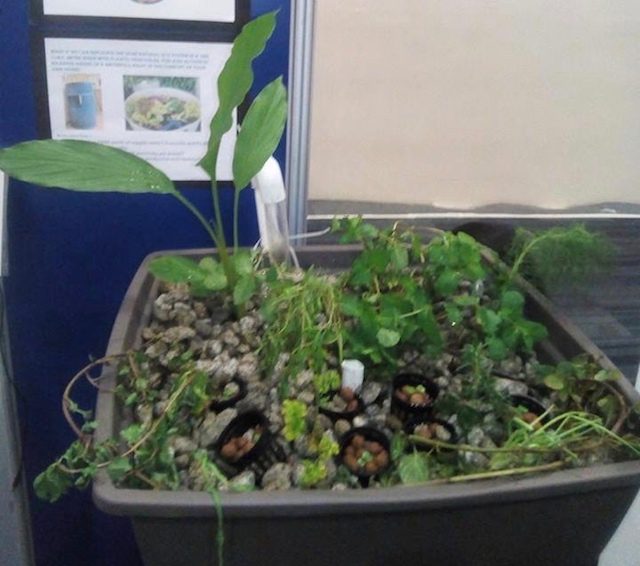SUMMARY
This is AI generated summarization, which may have errors. For context, always refer to the full article.

MANILA, Philippines – When he was a young boy, Robi del Rosario used to plant tomatoes and eggplants in his family’s backyard.
His interest in agriculture led him to explore hydroponics, which he’s now combined with aquaculture in the project that won the 2016 Hack Society workshop for solving the problem of food, agriculture, and poverty.
The Barangay Aquaponics project aims to promote an agricultural technique called aquaponics, which combines conventional aquaculture – raising aquatic animals in tanks – with hydroponics, or cultivating plants in water. (READ: Hacking agriculture: Promote landless, water-based farming)
Del Rosario’s group envisions the project to be a sustainable solution for many marginalized communities, which would be able to grow their own food and eventually use the system to cultivate products that they can sell.
For Del Rosario, aquaponics has the potential to be a game changer in the Philippines, where an estimated 7 million children experience hunger and malnutrition.
“The United Nations stated [that] to end world hunger, we need to have localized food systems. And we feel that aquaponics will be part of the future in how we produce food, because it’s not only sustainable, it will also help address our nutrition problem, especially the children,” Del Rosario said in an interview on Wednesday, September 6.
Since winning last year’s Hack Society workshop, the project has faced its own share of challenges, particularly with educating communities on the potential benefits of being able to grow their own food.
Refining the project
At first, people were hesitant to try it out, thinking the system was too complicated.
But Del Rosario explained that it was essentially a “plug and play” kind of system: after it’s been set up, there’s very little maintenance needed.
The system is set up with a fish tank below a grow bed: the fish waste is converted by nitrifying bacteria into an organic food source for the plants, which then filter the water for the fish and recirculates it back into the system.
An investment of P15,000 is needed to start an aquaponics system. In one square meter of space, families can grow 100 pieces of tilapia and shrimp; on the grow bed above it, they can plant 50 high-value plants such as lettuce and herbs.
Within a couple of months, families can already harvest the crops and fish. Aside from savings from growing their own food, Del Rosario said families also save from commuting expenses they usually incur by having to go to the market.
Still, there remains a challenge in terms of costs. Del Rosario said that in two families using the aquaponics system, the fish died because the family did not keep the electronic pump running, likely because of the cost of electricity.
What’s next
Recognizing the financial considerations, Del Rosario said their group is now eyeing potential partnerships with several companies as part of their corporate social responsibility programs.
The project also recently won the Forest Foundation Philippines’ 2017 Pitch Fest. As part of the partnership with the organization, Del Rosario’s group plans to set up aquaponics communities in rural areas.
They also plan to launch an automated aquaponics system by the 3rd quarter of next year for the Southeast Asia and Asia-Pacific markets.
As they continue to look for partners to tap for the project, Del Rosario said they will continue to emphasize Barangay Aquaponics’ advocacy: to educate, equip, and empower Filipinos.
Their group plans to educate citizens about the benefits of aquaponics, and then equip them with their own systems through their buy one-give one social business concept: every time someone buys an aquaponics system with them, they will provide marginalized communities another in return.
They also want to empower citizens through contract farming. The group aims to establish around 50 barangay partners which they would then help link to businesses and restaurants where the crops can be sold.
“Our goal is not just to give them aquaponics. Our goal really is to turn them into entrepreneurs,” Del Rosario said. – Rappler.com
Add a comment
How does this make you feel?
There are no comments yet. Add your comment to start the conversation.